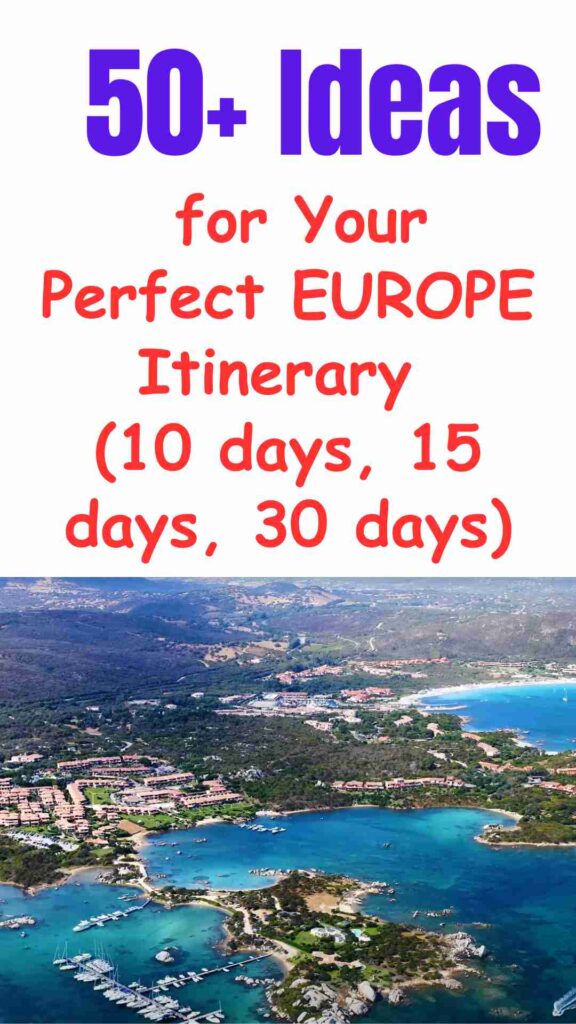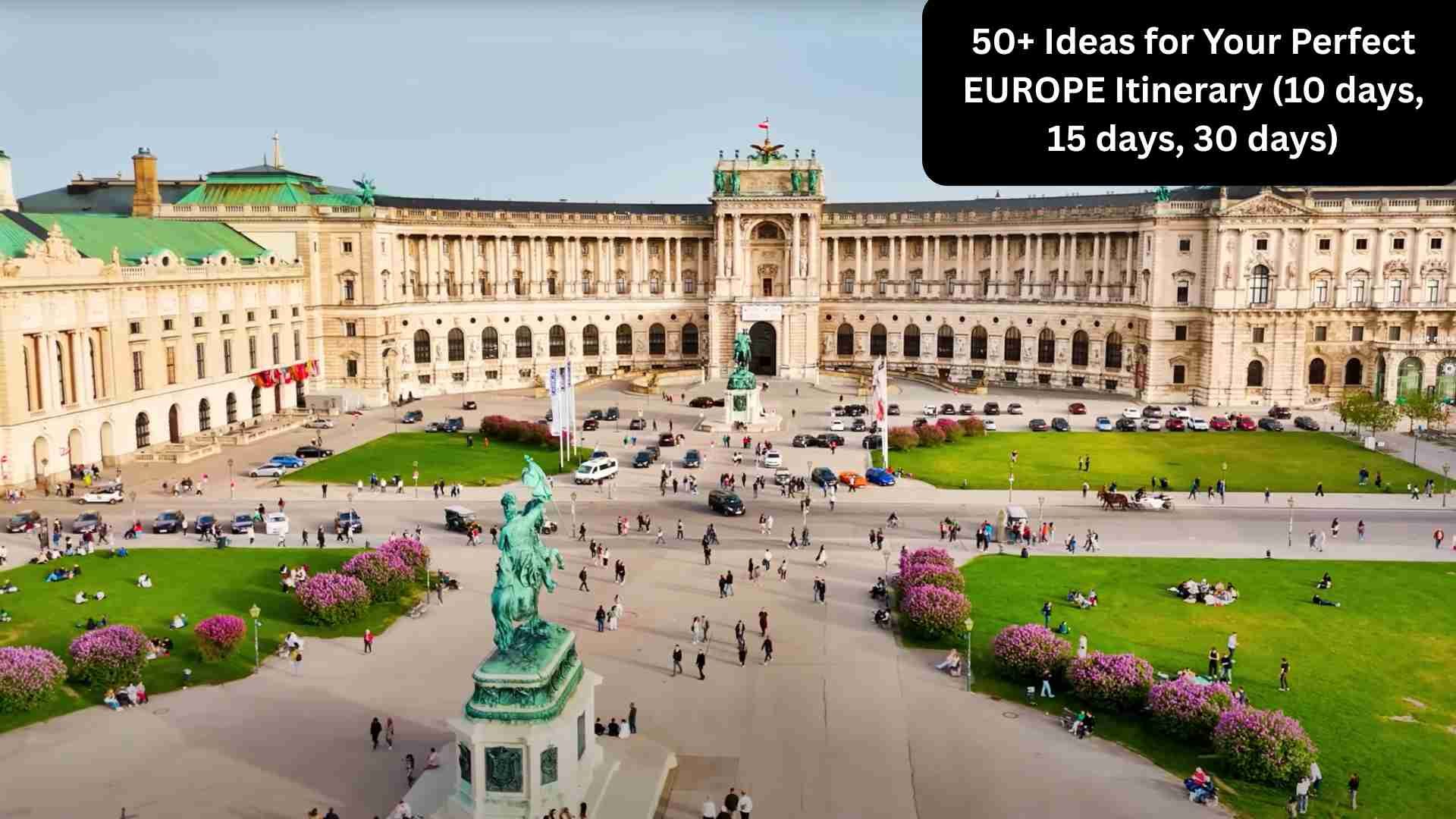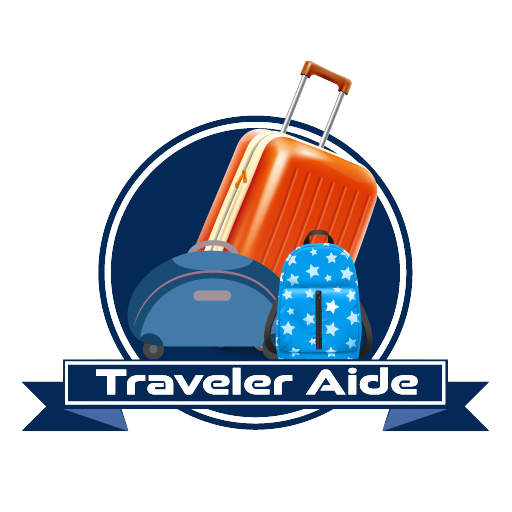So, you’re dreaming of Europe, but your calendar is limited. Whether you’ve got 10, 15, or 30 days, planning the perfect Europe itinerary can feel overwhelming. With so many incredible cities, coastlines, castles, and cultures packed into this continent, where do you even start?
Don’t worry. Think of this guide as your travel buddy — someone who’s been there, got lost, found a bakery by accident, and learned what really makes a European trip unforgettable.
In this article, you’ll find 50+ handpicked ideas to help you build a Europe itinerary that fits your style — fast-paced or slow, iconic cities or offbeat towns, or maybe a mix of both.
How to Plan a Europe Itinerary That Actually Works
Before we jump into the ideas, let’s quickly talk about strategy. Many people try to see too much in too little time and end up exhausted. Trust me, running through five countries in 10 days sounds exciting — until you’re spending half of it in train stations.

Here are a few tips I wish I’d known earlier:
- Focus on regions. For short trips, choose countries that are close to each other — like France, Belgium, and the Netherlands — or explore a single country in depth.
- Limit hotel changes. Switching accommodations every night might save time on paper, but it drains energy fast.
- Travel slowly when you can. Walking a quiet street in a small town or sipping espresso in a local café often becomes the highlight of your trip.
- Use local transport. Europe’s trains are fantastic, especially in places like Italy, Germany, and Switzerland.
Now let’s break it down based on how many days you have.
Europe Itinerary Ideas for 10 Days
If you only have 10 days, think of your itinerary as a “sampler.” Pick one or two regions max. You won’t see everything — and that’s the point. Instead, you’ll actually experience the places you go.
Here are some solid ideas based on travel styles:
Classic Cities Sampler (10 Days)
Perfect for first-timers who want the “greatest hits.”
- Paris (3 days): Eiffel Tower, Louvre, croissants, and romantic strolls by the Seine.
- Amsterdam (2 days): Canals, bikes, Van Gogh Museum, and cozy brown cafés.
- Berlin (3 days): History, street art, hipster vibes, and affordable food.
- Day trip idea: Take a train from Berlin to Potsdam or Paris to Versailles.
Why it works: The cities are well-connected by train and packed with variety.
Scenic Switzerland & Northern Italy (10 Days)
Ideal for nature lovers and train enthusiasts.
- Lucerne (2 days): Lakes, mountains, and chocolate shops.
- Interlaken & Lauterbrunnen (3 days): Waterfalls, hiking, and the breathtaking Jungfrau region.
- Milan (1 day): Quick city stop — fashion, Duomo, and great pizza.
- Lake Como (2 days): Picture-perfect villages and dreamy ferry rides.
- Venice (2 days): Gondolas, canals, and no cars in sight.
Why it works: The Swiss train system is top-notch, and the scenery? Unreal.
Spain & Portugal Highlights (10 Days)
A mix of culture, beaches, and bold flavors.
- Barcelona (3 days): Gaudí’s architecture, beach vibes, and tapas.
- Madrid (2 days): Art museums and late-night churros.
- Seville (2 days): Flamenco, orange trees, and Moorish palaces.
- Lisbon (3 days): Hills, trams, and stunning river views.
Why it works: Iberian cities are colorful, walkable, and full of life. High-speed trains and short flights make this doable.
Offbeat Balkans Escape (10 Days)
For travelers looking to skip the crowds.
- Dubrovnik (2 days): Ancient walls and Adriatic views.
- Kotor, Montenegro (2 days): A hidden gem with a stunning bay.
- Mostar, Bosnia (1 day): Iconic bridge and rich history.
- Split (2 days): Roman ruins and seaside relaxation.
- Zagreb (2 days): Croatia’s quirky capital.
- Plitvice Lakes (1 day): Unreal turquoise waterfalls.
Why it works: The Balkans offer great value, stunning landscapes, and fewer tourists.
Europe Itinerary Ideas for 15 Days
Fifteen days in Europe gives you breathing room. You can combine iconic cities with small towns, or blend culture with nature without feeling rushed.
Below are itinerary ideas based on different interests — whether you love food, history, coastal drives, or a slower rhythm.
🇮🇹 Italy in Depth (15 Days)
If Italy is on your bucket list (and let’s be honest, it should be), this itinerary lets you soak in the best of it — from ancient ruins to rolling vineyards.
- Rome (3 days): The Colosseum, Vatican, Trevi Fountain, and gelato on every corner.
- Florence (3 days): Renaissance art, Tuscan food, and a quick trip to Pisa or the Chianti countryside.
- Cinque Terre (2 days): Colorful cliffside villages, hiking trails, and salty sea air.
- Venice (2 days): Floating through canals, sipping spritzes, and getting wonderfully lost.
- Lake Garda or Verona (1 day): A quieter escape with charm and views.
- Milan (1 day): End your trip with a little fashion and fast trains to the airport.
Why it works: Italy’s fast trains and compact cities make this both easy and enriching.
🇫🇷 France & Switzerland Romance (15 Days)
For breathtaking views, fine food, and elegant cities.
- Paris (4 days): Iconic landmarks, cozy cafés, and day trips to Versailles or Giverny.
- Annecy (2 days): A postcard-perfect alpine town with canals and mountain air.
- Montreux (2 days): Swiss Riviera charm and Lake Geneva serenity.
- Zermatt (2 days): The Matterhorn, scenic trains, and hiking trails.
- Bern (1 day): A charming medieval capital.
- Lucerne or Zurich (2 days): Wind down with lake views and chocolate tasting.
Why it works: This route blends French flair and Swiss beauty — and the train rides are unforgettable.
Central Europe Discovery (15 Days)
A balanced mix of history, culture, and affordable fun.
- Prague (3 days): Fairy-tale castles and hearty food.
- Vienna (3 days): Grand architecture, coffee culture, and classical music.
- Budapest (3 days): Thermal baths, ruin bars, and a beautiful riverfront.
- Bratislava (1 day): An underrated gem on the Danube.
- Kraków (3 days): Old town magic and a deep historical experience.
- Day trip idea: Auschwitz or Wieliczka Salt Mine from Kraków.
Why it works: Cities are close, beautiful, and budget-friendly.
Southern Europe Road Trip (15 Days)
Want freedom and flexibility? Rent a car and explore at your own pace.
- Lisbon (2 days): Start with old-world charm and river views.
- Algarve (2 days): Sun-soaked cliffs and golden beaches.
- Andalusia, Spain (5 days): Seville, Córdoba, and Granada — full of flamenco and Moorish architecture.
- Valencia (2 days): Paella by the beach and futuristic architecture.
- Barcelona (4 days): End with a bang — Sagrada Família, tapas, and seaside walks.
Why it works: Warm weather, tasty food, and scenic coastal drives make this an unforgettable road adventure.
Slow & Scenic: The Nordic Loop (15 Days)
Prefer cool climates, calm streets, and majestic landscapes? Try the north.
- Copenhagen (3 days): Danish design, bikes, and canals.
- Oslo (2 days): Modern meets medieval with fjords in reach.
- Bergen (3 days): Gateway to Norway’s fjords. Don’t miss the Flåm Railway.
- Stockholm (3 days): Islands, museums, and Scandinavian charm.
- Gothenburg or Malmö (2 days): Chill coastal towns to wrap up your trip.
- Bonus: Take an overnight ferry between cities for a unique experience.
Why it works: This trip is about atmosphere — clean air, great food, and peaceful settings.
Europe Itinerary Ideas for 30 Days
Got a full month? You’re in luck. With 30 days, you can truly live in Europe — not just visit. This is your chance to blend city energy with countryside calm, and famous sights with hidden gems.
These itinerary ideas offer flexible pacing. You can follow them as-is or tweak based on your travel rhythm.
The Grand European Loop (30 Days)
Ideal for first-time travelers who want the full experience.
- London (3 days): Big Ben, British Museum, West End shows.
- Paris (4 days): Louvre, Eiffel Tower, and croissants in Montmartre.
- Amsterdam (3 days): Biking along canals and museum hopping.
- Berlin (3 days): Cold War history, street art, and cheap eats.
- Prague (3 days): Old Town magic and riverside views.
- Vienna (2 days): Elegant palaces and rich coffeehouse culture.
- Venice (2 days): No cars, just gondolas and gelato.
- Florence (2 days): Renaissance art and Tuscan views.
- Rome (3 days): Ancient ruins and unbeatable pasta.
- Barcelona (3 days): Tapas, beaches, and Gaudí’s wonders.
Why it works: You hit Western, Central, and Southern Europe without rushing. All stops are well-connected by trains or flights.
EuroRail Dream Itinerary (30 Days, By Train)
If you love scenic rides and relaxed schedules, this one’s for you.
- Paris (3 days): Use as your starting hub.
- Strasbourg (2 days): A blend of French and German charm.
- Lucerne (2 days): Swiss lakes and mountains.
- Zermatt (2 days): Ride the Glacier Express through the Alps.
- Innsbruck (2 days): Austrian mountain town with cozy vibes.
- Munich (3 days): Beer gardens, castles, and Bavarian culture.
- Salzburg (2 days): The Sound of Music and baroque beauty.
- Ljubljana (2 days): Slovenia’s adorable, green capital.
- Lake Bled (1 day): Row a boat to a church on an island.
- Budapest (3 days): Architecture, spas, and ruin bars.
- Kraków (3 days): A walkable old town with deep history.
- Berlin (3 days): A powerful finish with energy and edge.
Why it works: Eurail passes make this seamless. You get epic views, and almost every leg is doable by train.
The Slow Traveler’s Month (30 Days)
If you want to avoid rushing and actually live in places, try this approach. Fewer moves, deeper experiences.
- Lisbon (5 days): Start slow. Sip coffee, ride tram 28, enjoy custard tarts.
- Porto (3 days): Port wine, river walks, and tiled buildings.
- Madrid (4 days): Tapas, museums, and late-night energy.
- Granada (3 days): The Alhambra and magical sunsets.
- Provence (5 days): Rent a car. Lavender fields, vineyards, and markets.
- Nice & the French Riviera (4 days): Seaside towns and slow mornings.
- Tuscany (6 days): Stay in a countryside villa. Day trip to Florence, Siena, and wineries.
Why it works: This style gives you time to read in a park, chat with locals, or cook a meal with local ingredients. It’s about immersion, not just movement.
Budget Europe Itinerary (30 Days, Affordable)
Backpacking or traveling on a budget? This plan keeps costs low and experiences rich.
- Budapest (4 days): Great food and hostels under €20/night.
- Bratislava (2 days): Chill and affordable.
- Kraków (4 days): Fascinating and inexpensive.
- Lviv, Ukraine (3 days): Unique culture and low prices.
- Bucharest (3 days): A bit gritty, but lots to explore.
- Sofia (3 days): Friendly and cheap.
- Skopje (2 days): Quirky statues and Balkan warmth.
- Thessaloniki (3 days): Sea breeze and history.
- Athens (4 days): Ruins, rooftop bars, and budget eats.
- Santorini (2 days): Short ferry ride for a magical finish.
Why it works: The Balkans and Eastern Europe stretch your money further, and the vibe is more relaxed.
Multi-Country + One Base Strategy (30 Days)
Love weekend trips but want one “home base”? Try this.
- Base in Berlin (15 days): Affordable, central, and cool. Use budget airlines/train to explore:
- Copenhagen (weekend trip)
- Warsaw or Gdańsk (weekend trip)
- Prague (weekend trip)
- Copenhagen (weekend trip)
- Base in Barcelona (15 days): After Germany, head south.
- Valencia or Seville (weekend trip)
- Marseille or the French Riviera (weekend trip)
- Andorra or Mallorca (short trip)
- Valencia or Seville (weekend trip)
Why it works: You settle into a rhythm, avoid packing every few days, and still see tons of places via cheap flights or trains.
Planning Tips to Make Your Europe Trip Smoother
Now that you’ve got itinerary inspiration for 10, 15, or 30 days, let’s talk how to make it all come together without headaches. A good plan doesn’t mean strict scheduling — it means leaving space for magic while avoiding travel chaos.
Here are practical tips from travelers who’ve been there (and learned the hard way):
Book Big Stuff Early
- Flights — Use tools like Skyscanner or Google Flights to find deals. Flying mid-week is often cheaper.
- Trains — For high-speed trains (especially in France, Italy, and Spain), book early to save money.
- Accommodation — Hotels and Airbnb get booked fast in peak season (May–September). Try Booking.com or Hostelworld for flexible options.
- Attractions — Popular spots like the Eiffel Tower, Vatican Museums, and Sagrada Família sell out. Pre-book your tickets online.
Pack Light and Smart
Europe’s charm often lies in its cobbled streets, metro stairs, and small elevators. A huge suitcase will slow you down — and probably annoy you.
- Carry-on or small checked bag is ideal.
- Bring a light daypack for daily exploring.
- Stick to comfortable shoes — you’ll walk a lot more than you think.
- Pack layers — weather can change fast, even in summer.
- Don’t forget a universal adapter and a portable charger.
Transport Tips
Getting around Europe can be surprisingly easy — if you know the tricks.
Trains
- Use Eurail or Interrail passes if you plan lots of train rides. But compare costs — sometimes point-to-point tickets are cheaper.
- Germany, Switzerland, and Austria have some of the best and most scenic train rides.
- France, Italy, and Spain offer high-speed trains that save time.
Budget Airlines
- Ryanair, Wizz Air, EasyJet, Vueling — cheap but strict on baggage limits.
- Always check which airport they use — it’s sometimes far from the city.
Buses
- FlixBus and BlaBlaBus offer cheap travel between major cities.
- Slower than trains, but can be budget-friendly and reliable.
Local Transport
- Download apps like Citymapper, Google Maps, or Moovit for metro and bus routes.
- In many cities, a daily or 72-hour pass is better than paying per ride.
Where to Stay: Picking the Right Place
Your accommodation sets the tone. Don’t just go by price — location and vibe matter, especially in Europe where neighborhoods vary a lot.
- City center or near a train station is best for short stays.
- Hostels are great for solo travelers or anyone on a budget. Many offer private rooms.
- Apartments work well for longer stays or families.
- Look for places with kitchenettes — saves money on food!
Pro tip: Read recent reviews. A beautiful photo can’t hide thin walls or loud neighbors.
Apps That Make Travel Easier
Here are the apps you’ll want on your phone before you go:
- Google Maps – Download offline maps of cities in advance.
- Rome2Rio – Helps compare transport options between cities.
- Omio – Book trains, buses, and flights in one place.
- XE Currency – For easy currency conversion.
- Duolingo – Learn basic local phrases. Even a few words help!
- WhatsApp – For communication, especially with hosts and tours.
Sample Itineraries at a Glance
Need something quick to copy or customize? Here are short sample itineraries based on trip length and travel style:
10 Days
Culture & Big Cities:
- Paris (3) → Amsterdam (2) → Berlin (3) → Day trip to Potsdam or Bruges
Scenic + Relaxed:
- Lucerne (2) → Interlaken (2) → Milan (1) → Lake Como (2) → Venice (3)
15 Days
Classic Italy + Switzerland:
- Rome (3) → Florence (3) → Venice (2) → Lucerne (2) → Lauterbrunnen (2) → Zurich (3)
Central Europe Circuit:
- Prague (3) → Vienna (3) → Budapest (3) → Kraków (3) → Bratislava (1) → Return
30 Days
Grand Loop:
- London (3) → Paris (4) → Amsterdam (3) → Berlin (3) → Prague (2) → Vienna (2)
→ Venice (2) → Florence (2) → Rome (3) → Barcelona (3) → Madrid (3)
Slow + Scenic:
- Lisbon (5) → Porto (3) → Madrid (4) → Provence (5) → Nice (4) → Tuscany (6) → Florence (3)
Europe Travel FAQ
Q: What’s the best time to visit Europe?
A: May to June and September to early October. Weather’s great, and crowds are thinner than peak summer.
Q: Is it safe to travel between countries?
A: Yes. The Schengen Zone allows easy border crossings. Just keep your passport handy.
Q: How much should I budget per day?
- Budget: $60–90 (hostels, street food, buses)
- Mid-range: $120–180 (hotels, trains, meals out)
- High-end: $250+ (luxury stays, fine dining)
Q: Should I get a SIM card or eSIM?
A: Yes! Having mobile data helps with maps, bookings, and translation. Try eSIMs like Airalo or get a local SIM on arrival.
Q: Do I need travel insurance?
A: Absolutely. European healthcare is great, but non-citizens still pay without coverage.
Final Thoughts
There’s no one right way to “do” Europe.Some people thrive on museum marathons. Others prefer mountain views, long dinners, and lazy afternoons in piazzas. The good news? Europe has room for all of it.
Start with what excites you. That might be sipping wine in Provence, hiking the Dolomites, or dancing in a Lisbon bar. Let that shape your route.
And remember: it’s better to do fewer places well than to rush through dozens. You’re not collecting passport stamps — you’re collecting stories.
So pack your curiosity, keep your plans flexible, and enjoy the ride.
Europe is waiting.


